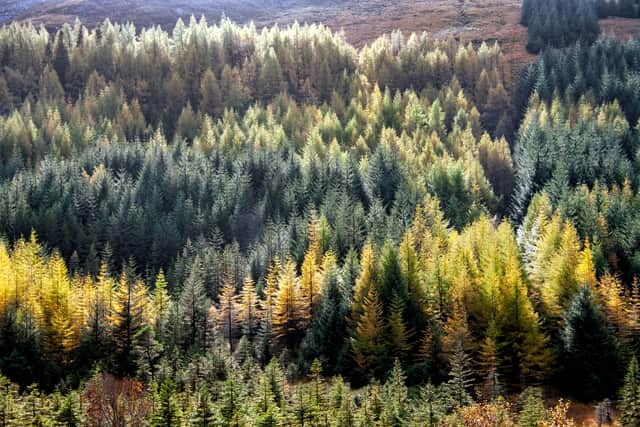Derelict land in Glasgow to become 14-acre forest
and live on Freeview channel 276
Cadder is in line to be home to the woodland on a long term empty site as part of bid for Vacant and Derelict Land funding.
The council has come up with 150 sites in streets and parks to plant more species across the city. The areas of Possilpark, Bridgeton and Dalmarnock, Govan and Levern & District have also been identified as places to up tree numbers according to the Clyde Climate Forest initiative.
Advertisement
Hide AdAdvertisement
Hide AdSNP Councillor Angus Millar, city convener for climate,said: “Extending the city’s tree canopy is a vital part of our plans to address the climate emergency. Trees absorb carbon as they grow, especially in their younger years, and act as a significant sink for carbon over their life time.


“But trees also can help to mitigate the direct effects of climate change in local communities. In summer the coverage of leaves will provide shelter from the heat and rays from the sun but also captures falling rain water that can help to minimise local flooding incidents. As trees mature their deep roots also improve the drainage of the ground where they grow and provide habitats for wildlife.”
Just over 16 per cent of Glasgow’s 17,730 hectares is covered by an estimated two million trees. It is hoped to expand the city’s tree canopy cover by at least one per cent in time for 2030. Street trees can be expensive, with the cost ranging from £3,000 to £30,000 per tree with costs coming from ground work needed for canopy growth, safeguarding utility infrastructure and protecting footways from roots.
Planting them into existing grass verges and central reservations is much cheaper coming in at £300 per tree – with them likely to live longer as well.
Advertisement
Hide AdAdvertisement
Hide AdThe Glasgow tree plan could see planting on a further 189.4 hectares of land over the next seven years – potentially bringing hundreds of thousands of new trees.
Last year during 2021 to 2022 there were 10,055 trees planted while the year before saw 24,000 added in Glasgow.
Councillors were given details of the forestry and woodland strategy and Glasgow tree plan at the net zero and climate progress monitoring city policy committee.
Councillor Stephen Docherty, Labour, said: “The mature trees are the ones that do carbon capture. We have out of date planning policies where mature trees can be felled just because they are in the wrong place.”
Advertisement
Hide AdAdvertisement
Hide AdMentioning how he challenged the removal of two trees in his Langside ward, he added: “Mature trees need to be kept.”
Council official Rachel Smith said more substantial sums of money are being sought from developers to compensate for loss of trees.
She said: “As a service we continue to work closely with planning colleagues to provide data and the professional evidence to inform these decisions in relation to planning applications you mention Councillor Docherty.”
She said the team “provide much more robust data that allows us to seek, where advice of planning colleagues is that a mature tree can’t be kept, more substantial contributions from developers than we might have done in the past.”
Advertisement
Hide AdAdvertisement
Hide AdSpeaking at the meeting, Labour councillor Robert Mooney asked for more details on the bid to plant trees in Cadder in his Canal ward.
A council paper submitted to the committee said: “This service is working with communities and Green Action Trust to utilise Vacant and Derelict Land (VDL) funding to bring a long term VDL site in Cadder into actively managed greenspace.
It added: “Phase 1 of the VDL funded project has included the preparation of a woodland management plan and delivery of early actions, and a further funding bid is being prepared to deliver woodland management, woodland creation, enhanced biodiversity, supporting active travel and outdoor learning across the 14.45 hectare site, all of which have been identified by Cadder residents as key to delivering a quality, multifunctional greenspace within their community.”
Comment Guidelines
National World encourages reader discussion on our stories. User feedback, insights and back-and-forth exchanges add a rich layer of context to reporting. Please review our Community Guidelines before commenting.